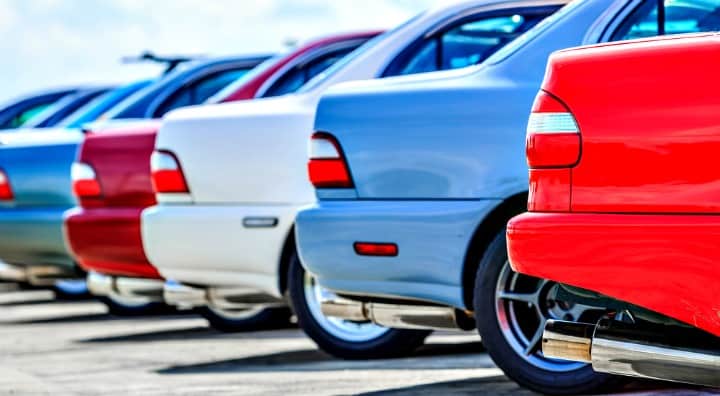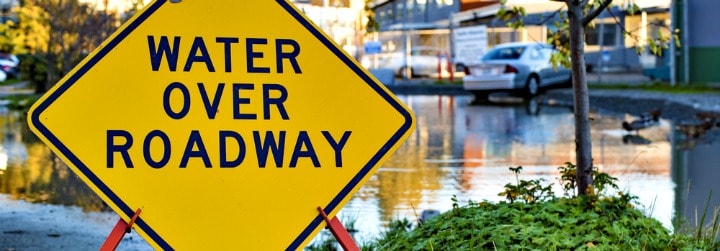How to Avoid Buying a Flooded Vehicle

When Kenton Basinger found a 2012 Chevy Silverado on Craigslist for $14,000 — about $4,000 less than the usual asking price — he thought he was walking into an incredible deal. But what he’d really stepped into was a nightmare.
According to Frank Scafidi, director of public affairs for the National Insurance Crime Bureau (NICB), Basinger started noticing problems with the truck just days after he bought it, including the sudden malfunctioning of the power windows and the portentous illumination of the check-engine light.
New or made to look new?
Concerned, Basinger took it to his local mechanic who gave it a once over and told Basinger that it looked like his newly purchased truck had been previously flooded.
After being alerted to Basinger’s story by way of an investigative reporter in Houston, the NICB went out to inspect Basinger’s truck — and sure enough they found even more evidence of flood damage. There was sand and debris under the bed liner and water and moisture lingered beneath the floor carpets. They also noticed rust on the undercarriage, which had been hastily covered up with spray paint.
“Unfortunately this is not an unusual story,” says Scafidi. “People fall prey to these scammers who are trying to unload flooded vehicles. They clean them up to look good as new and then price them in such a way that attracts innocent people looking for a decent car or truck. And after major flood events we see this even more frequently.”
In Basinger’s case it was last year’s Hurricane Irma that paved the way for this particular scam.
That storm may seem like a long time ago, but don’t let timing fool you when it comes to flood-damaged cars hitting the market.
Scafidi says the truck originated in Florida, where it was up for sale at a dealership when Irma struck the Sunshine State. It was uninsured at the time and no flood claim was ever made on the pickup, which meant it had no salvage title and didn’t appear on the NICB’s online VINCheck database, where consumers can go to see if a vehicle was ever given a salvage title.
A few months after the hurricane the truck wound up in Texas, where Scafidi says it was “sold at auction with a clean title.” A dealership bought the truck at the auction and eventually sold it to the unsuspecting Basinger.

“We always see spikes in this type of nefarious behavior after severe weather events like Irma and [Hurricane] Harvey [in Texas],” says Scafidi. “For someone with larceny in his heart, it’s the perfect scam. They get these flood-damaged vehicles for a song at auction, they wash and detail them, make them smell fresh, work up some phony papers, take them to a different state, and some poor soul becomes the victim of something they didn’t see coming.”
According to Scafidi, it was a severe weather event that prompted the NICB to develop its VINCheck database in the first place. Following Hurricane Katrina in 2005, Scafidi says the NICB saw “massive amounts” of flood-damaged vehicles ending up on the market without any way for consumers to check their salvage status.
“We thought this would be a great way for consumers to access that information in order to make sure they weren’t buying something that had been shipped, retitled, and sold as a scam,” says Scafidi. “Now it’s the most visited page on our website, which means the word is getting out. But unfortunately it’s still a significant problem.”
CHECK OUT: Where in Texas Do You Pay the Most for Car Insurance?
Because these flood-vehicle scams operate largely underground and across various state lines, specific figures are difficult to discover. But according to Chris Basso, used car expert for Carfax, which supplies vehicle history reports to individuals and businesses on used cars and trucks, there were about 325,000 flooded vehicles on the road even before Harvey and Irma hit last summer.
What’s more, Basso says about half of the vehicles damaged by hurricane and tropical storm floodwaters end up back on the road in some form or another.
“These cars can be ticking time bombs in terms of how water affects everything from the electrical components to metal corrosion and a compromising of safety features like air bags and anti-lock brakes,” says Basso. “That’s a huge risk for people who are paying thousands of dollars and putting their families into a vehicle that could literally explode.”
To drive home the point, Basso says Carfax embarked on an experiment last year to demonstrate just how easily consumers could be duped.
They obtained a vehicle that was flooded during Hurricane Harvey and made it look “as good as any car you’d find on a dealer lot.” They then placed it next to a similar vehicle that had not been damaged by flooding and asked participants to pick the one they’d hypothetically like to buy. According to Basso, more than half of the consumers that participated picked the flood-damaged vehicle.
“The reason flood-damaged vehicles are so attractive to con men is that there’s little sign of any physical damage to the car,” says Basso. “Flood waters submerge the vehicle and eventually the water recedes. They can easily make that car look fantastic from the outside, but what you’re left with is a vehicle literally rotting from the inside out.”
How to avoid getting scammed
Unfortunately, says Scafidi, there’s little recourse for consumers who wind up buying a flood-damaged vehicle.
“These people get burned and they get burned badly because there’s no way of tracking down the scammer and you’re just stuck with it,” says Scafidi. “That’s why an ounce of prevention is worth a pound of cure in this case.”
To that end, here are a few things you can do to make sure you don’t find yourself behind the wheel of a flood-damaged car or truck:
- If it’s too good to be true, it probably is. “I have always told my clients that if you see a vehicle being offered well below market value, that should be your first sign of trouble,” says Sarah Lee Marks, founder and president of MyCarLady.com, a personal car concierge and consumer advocacy website. “Don’t get wooed by the sticker price without doing your homework.”
- Give the vehicle a thorough inspection before you buy it. Buying a car can be an overwhelming process, but Marks says it helps to slow down and take the time to look beneath the surface.
- “If the car is being sold privately, you should inspect it as thoroughly as possible,” says Marks. “That includes pulling up the carpet or coverings in the trunk and checking the wheel wells for any signs of rust or repair. Also, turn on the lights, radio, air-conditioning, power seats, windows, and door locks to make sure they are working and there’s no change in the battery draw.”
- Basso says you should also take it for a “thorough” test drive. “I’m not talking about five minutes around the block,” says Basso. “Get out onto a highway and really get a sense of how the vehicle operates.”
- Request a Carfax report. “There’s no reason an individual seller or dealer shouldn’t give you a Carfax report so you can clearly see the vehicle’s history,” says Basso. “When you get it, look carefully for flood damage info or for any sign that it was in an area where flooding recently occurred.”
- Take it to an expert. “If you’re considering buying a used car from anyone other than a dealer of the brand, take it to a certified mechanic and pay for a complete inspection. It’ll be worth every penny down the road,” says consumer car coach Lauren Fix. “If you want to do it yourself you’ll need some automotive skill and common sense. Pop the hood, open the fuse box, and look inside. If you see any moisture or rust, this is likely a damaged car. Do not buy it and walk away!”
